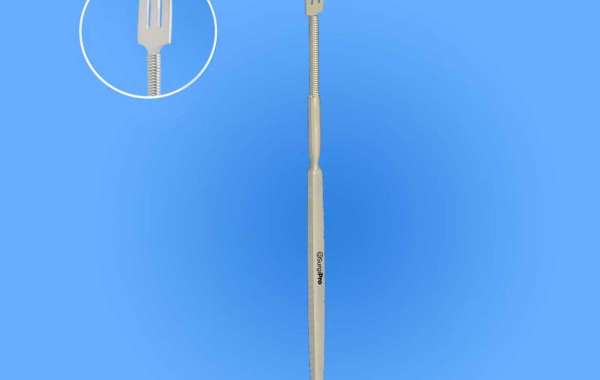Plastic surgery has evolved significantly over the years, with technological advancements playing a crucial role in enhancing surgical precision, safety, and outcomes. One area where these advancements are particularly evident is in the development of plastic surgery instruments. From traditional scalpels to state-of-the-art robotic systems, these tools have undergone remarkable transformations, revolutionizing the field of plastic surgery. In this article, we delve into the latest technological advances in plastic surgery instruments, exploring how these innovations are shaping the future of aesthetic and reconstructive procedures.
Robotic-Assisted Surgery
Robotic-assisted surgery has gained prominence in various medical specialties, including plastic surgery. These systems offer unparalleled precision and dexterity, allowing surgeons to perform complex procedures with enhanced accuracy. In plastic surgery, robots are utilized for tasks such as tissue dissection, suturing, and microvascular anastomosis. The integration of artificial intelligence (AI) algorithms further enhances the capabilities of these systems, enabling them to adapt to the surgeon's movements and provide real-time feedback.
3D Printing Technology
3D printing technology has revolutionized the manufacturing process of plastic surgery instruments. Surgeons can now create custom surgical tools tailored to the unique anatomical needs of each patient. These custom surgical instruments improve surgical precision and minimize tissue trauma, leading to better outcomes and faster recovery times. Additionally, 3D printing allows for rapid prototyping and iterative design modifications, accelerating the development of innovative surgical instruments.
Endoscopic Techniques
Endoscopic techniques have become increasingly prevalent in plastic surgery, enabling surgeons to perform minimally invasive procedures with reduced scarring and recovery time. Advanced endoscopic instruments equipped with high-definition cameras and flexible shafts provide enhanced visualization and maneuverability, allowing for precise tissue dissection and manipulation. These techniques are particularly beneficial for facial rejuvenation procedures, such as endoscopic brow lifts and facelifts.
Laser Technology
Laser technology has transformed various aspects of plastic surgery, offering precise tissue ablation, coagulation, and skin resurfacing capabilities. Laser-assisted liposuction, for example, allows for more controlled fat removal and smoother contouring compared to traditional methods. Furthermore, laser skin tightening procedures help improve skin laxity and texture without the need for invasive surgery. Continued advancements in laser technology promise to further expand the applications of lasers in plastic surgery.
Smart Instruments
The emergence of smart instruments equipped with sensors and connectivity features has ushered in a new era of data-driven plastic surgery. These instruments provide real-time feedback on tissue characteristics, blood flow, and surgical technique, empowering surgeons to make informed decisions during procedures. Smart instruments can also integrate with surgical navigation systems, enhancing accuracy and reducing the risk of complications. By leveraging data analytics and machine learning, these instruments have the potential to optimize surgical outcomes and patient safety.
Nanotechnology
Nanotechnology holds immense promise for the future of plastic surgery instruments. Nanoscale materials and devices can be engineered to exhibit unique properties, such as enhanced strength, flexibility, and biocompatibility. In plastic surgery, nanotechnology is being explored for applications such as targeted drug delivery, tissue regeneration, and wound healing. Nanomaterials incorporated into surgical instruments can improve their performance and durability, ultimately benefiting patients undergoing aesthetic or reconstructive procedures.
FAQ
Q1: How do robotic-assisted surgery systems benefit plastic surgeons and patients?
A1: Robotic-assisted surgery systems offer increased precision, dexterity, and control, allowing surgeons to perform complex procedures with enhanced accuracy. For patients, this translates to reduced scarring, faster recovery times, and improved surgical outcomes.
Q2: Are 3D-printed surgical instruments safe and effective?
A2: Yes, 3D-printed surgical instruments are rigorously tested to ensure safety and efficacy. These custom instruments are designed to meet the specific needs of each patient, resulting in improved surgical precision and outcomes.
Q3: Can smart instruments replace the expertise of plastic surgeons?
A3: Smart instruments complement the skills and expertise of plastic surgeons by providing real-time feedback and enhancing surgical precision. However, they do not replace the judgment and experience of trained surgeons, who ultimately make critical decisions during procedures.
Conclusion
The latest technological advances in plastic surgery instruments are revolutionizing the field, offering unprecedented precision, safety, and patient outcomes. From robotic-assisted surgery systems to 3D-printed custom instruments, these innovations are transforming the way aesthetic and reconstructive procedures are performed. As technology continues to evolve, plastic surgeons can look forward to even more advanced tools and techniques that will further enhance their ability to deliver exceptional care to patients.







